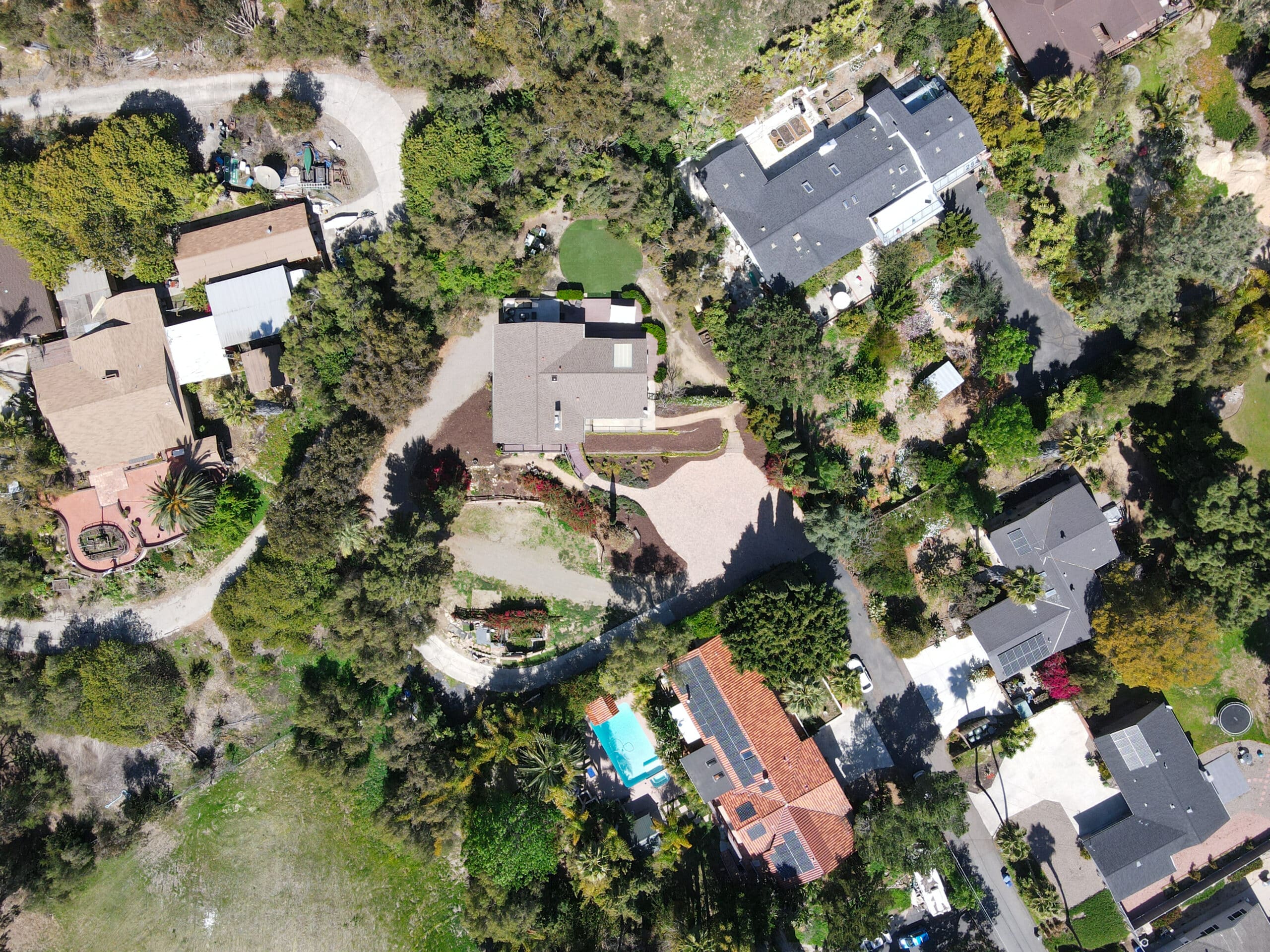Estimated reading time: 10 minutes
In the complex landscape of today’s corporate world, executive security stands as a critical pillar ensuring the safety and privacy of corporate leaders against an array of evolving threats. Essential Executive Security Strategies for Today’s Corporate Leaders outlines the advanced measures and protocols to safeguard these high-profile individuals. This article encapsulates the paramount strategies for top-tier protection, from personalized risk assessments and cutting-edge surveillance technologies to robust cybersecurity defenses and comprehensive executive security services. It delves into the expertise behind executive security service, the nuances of private executive security, and the significance of executive private security, offering a holistic view of secure travel management, emergency response, and the indispensable role of confidentiality. This comprehensive guide is an essential resource for those seeking to implement the highest standards of executive protection in the modern business environment.
Table of contents
- Tailoring Security: Risk Assessments & Custom Plans
- Next-Gen Surveillance for Executive Safety
- Cybersecurity: Shielding Executives Digitally
- Elite Protection Personnel: Skills & Training
- Secure Executive Travel: Planning & Management
- Managing Emergencies: Response & Crisis Management
- Upholding Confidentiality in Executive Protection
- Conclusion
Tailoring Security: Risk Assessments & Custom Plans
Understanding the Executive’s Lifestyle and Threat Profile
Risk assessment forms the cornerstone of adequate executive security. This process begins with thoroughly understanding the executive’s daily routine, professional commitments, and personal lifestyle. Security experts analyze potential threats, from physical attacks to privacy invasions, tailored to the executive’s unique situation. For instance, the risk profile for a CEO of a multinational corporation might include threats from disgruntled employees, corporate espionage, and international travel risks. By mapping out the executive’s life in detail, security planners can identify vulnerabilities and devise strategies to mitigate them, ensuring a bespoke security solution that aligns with the individual’s needs.
Crafting a Personalized Security Strategy
Once the risk assessment is complete, developing a personalized security plan is next. This comprehensive strategy covers physical security, digital protection, and emergency response protocols. It considers the executive’s work and travel schedules, public appearances, and personal preferences to ensure that security measures enhance, rather than hinder, their lifestyle. The plan might include advanced surveillance systems at the executive’s home and office, secure transportation for daily commutes and international trips, and encrypted communication devices to protect sensitive information.
Continuous Evaluation and Adjustment
The effectiveness of an executive security plan depends on its ability to adapt to changing threats and circumstances. Therefore, continuous evaluation and adjustment are crucial. Security teams regularly review the executive’s activities, emerging threats, and the performance of existing security measures. They conduct periodic reassessments to update the risk profile and adjust the security strategy accordingly. This dynamic approach ensures that the executive’s security measures remain robust and responsive, safeguarding them against current and future threats.
Next-Gen Surveillance for Executive Safety
Integration of Cutting-Edge Surveillance Technology
In the realm of executive security, the adoption of advanced surveillance and monitoring systems is non-negotiable. These systems leverage the latest technology, including high-definition cameras, motion detectors, and intrusion detection systems, to provide round-the-clock surveillance of the executive’s physical environment. For instance, intelligent cameras equipped with facial recognition technology can identify known threats and unauthorized individuals in real-time, enhancing the security of offices and residences. Moreover, these systems are often integrated with AI to analyze patterns and predict potential security breaches before they occur, offering a proactive approach to executive protection.
Real-Time Monitoring and Rapid Response
The effectiveness of surveillance systems hinges on their ability to facilitate real-time monitoring and ensure a rapid response to detected threats. Security operations centers (SOCs) play a pivotal role in this process, with trained professionals monitoring surveillance feeds 24/7. These experts can quickly assess a situation and coordinate an immediate response, whether it involves dispatching security personnel or contacting law enforcement. Integrating mobile surveillance solutions, such as body cams and vehicle-mounted cameras, extends this capability, ensuring executives are protected in static locations and while on the move.
Privacy Considerations and Compliance
While surveillance is critical for security, it must also be balanced with privacy considerations. Executive security teams are adept at designing surveillance systems that provide maximum protection while respecting the privacy of the executive and their associates. This involves careful placement of cameras and adherence to legal surveillance and data protection guidelines. Additionally, encrypted communication channels for transmitting and storing surveillance footage safeguard against unauthorized access, ensuring that privacy and compliance are always maintained.
Cybersecurity: Shielding Executives Digitally
Implementation of Robust Cyber Defense Strategies
In today’s digital age, executives face various cyber threats, from phishing attacks to sophisticated hacking attempts. To counter these, implementing robust cyber defense strategies is paramount. This includes using advanced encryption for all communications and data storage, ensuring that sensitive information remains secure from interception or breaches. Furthermore, multi-factor authentication (MFA) adds a layer of security for accessing critical systems and information, significantly reducing the risk of unauthorized access through compromised credentials.
Regular Security Audits and Vulnerability Assessments
Regular security audits and vulnerability assessments are crucial to maintain a robust cybersecurity posture. These evaluations help identify potential weaknesses in the organization’s digital infrastructure and recommend corrective actions to mitigate risks. For example, penetration testing conducted by ethical hackers can uncover hidden vulnerabilities in networks and applications, providing insights into how an actual attacker could gain unauthorized access. By addressing these issues, executive security teams can proactively fortify defenses and protect against emerging cyber threats.
Cybersecurity Awareness and Training
A critical aspect of digital protection is fostering cybersecurity awareness among executives and their teams. This involves regular training sessions on the latest cyber threats and best practices for safe online behavior. Executives learn to recognize phishing emails, avoid unsafe websites, and secure their devices against malware. Additionally, by promoting a culture of security within the organization, every employee becomes proactive in the collective defense against cyber attacks, further enhancing the executive’s digital security.
Elite Protection Personnel: Skills & Training
Specialized Training for High-Risk Situations
Executive protection personnel are at the forefront of ensuring the safety and security of high-profile individuals. These professionals undergo specialized training designed to prepare them for various high-risk situations. This training encompasses advanced defensive tactics, emergency medical response, and evasive driving techniques. For instance, they learn to quickly protect their protectees from dangerous situations, provide immediate first aid in case of injury, and navigate vehicles under threat to ensure safe passage. Such rigorous preparation ensures that executive protection agents can handle any scenario precisely and calmly.
Expertise in Threat Assessment and Behavioral Analysis
Beyond physical security measures, executive protection personnel possess expertise in threat assessment and behavioral analysis. This skill set enables them to detect potential threats before they materialize, often by observing subtle cues in the behavior of those around the executive or identifying suspicious activities in the vicinity. They are trained to assess the mood of crowds at public appearances, recognize the signs of impending aggressive behavior, and take preemptive action to avoid confrontations. This proactive approach to security is invaluable in preventing incidents before they escalate into threats.
Continuous Professional Development and Certification
The executive protection field constantly evolves, with new threats and security technologies emerging regularly. Therefore, continuous professional development is essential for protecting personnel to stay ahead of the curve. Many undergo regular training updates, attend security seminars, and achieve certifications in specialized areas of protection, cybersecurity, and crisis management. This commitment to ongoing education ensures they refine their existing skills and acquire new knowledge and techniques to enhance their effectiveness. By investing in their professional growth, executive protection teams offer their protectees the highest security standard.
Secure Executive Travel: Planning & Management
Pre-Travel Risk Assessments and Itinerary Planning
Effective travel security management begins with meticulous pre-travel risk assessments and itinerary planning. Before an executive embarks on any trip, security teams thoroughly evaluate the destination’s current security climate, including potential threats like political unrest, criminal activity, and health risks. This assessment informs the development of a comprehensive travel plan that includes safe routes, secure accommodations, and emergency contingency plans. By anticipating and mitigating risks ahead of time, security professionals ensure that executives can conduct their business with minimal disruption and maximum safety.
Secure Transportation and Local Support Networks
Secure transportation is a critical component of travel security management. This involves armored vehicles with the latest security features and trained drivers versed in evasive and defensive driving techniques. Additionally, establishing local support networks in the destination country can significantly enhance security. These networks often include local security firms, law enforcement contacts, and medical facilities that have been vetted for reliability and quality. Such partnerships provide valuable on-the-ground support, ensuring a rapid response to any incident during the executive’s travel.
Real-Time Monitoring and Communication
Real-time monitoring and constant communication are paramount for maintaining security throughout the executive’s trip. Security teams use a combination of GPS tracking, secure communication devices, and local intelligence to monitor the executive’s movements and the surrounding environment for potential threats. This enables them to provide timely updates and advisories, making adjustments to the travel plan as necessary. In addition, executives are equipped with emergency communication tools, allowing them to quickly alert their security team in case of an unexpected situation. This integrated approach to travel security ensures that executives remain protected at every journey stage.
Managing Emergencies: Response & Crisis Management
Developing Comprehensive Emergency Plans
A cornerstone of executive security is responding swiftly and effectively in crises. Developing comprehensive emergency plans is crucial. These plans detail protocols for various scenarios, including medical emergencies, natural disasters, and security threats. Tailored to the executive’s specific risk profile and daily activities, these protocols outline the steps for evacuation, communication, and coordination with local emergency services. Training sessions and drills are conducted regularly to ensure the executive and their security team can execute these plans under pressure, minimizing confusion and response time during emergencies.
Coordination with Local Authorities and Emergency Services
Effective emergency response and crisis management depend on seamless coordination with local authorities and emergency services. Security teams establish relationships with these entities well in advance, ensuring that any response to a crisis is swift and coordinated. This collaboration may involve sharing intelligence about potential threats, integrating communication systems, and planning joint response exercises. Such preparatory work is invaluable, as it enables all parties to act unified and efficiently when responding to an emergency, significantly improving the outcome for the executive and any affected stakeholders.
Post-Crisis Recovery and Analysis
After a crisis has been managed and stability restored, the focus shifts to post-crisis recovery and analysis. This phase involves debriefing all involved parties, assessing the effectiveness of the response, and identifying lessons learned. Any gaps in the emergency plan or execution are addressed, with adjustments made to prevent similar issues in the future. This continuous loop of planning, execution, and refinement ensures that emergency response strategies evolve with emerging threats and new best practices, keeping the executive’s safety and security at the forefront.
Upholding Confidentiality in Executive Protection
Prioritizing Privacy in Security Operations
In executive protection, confidentiality and discretion are not just practices; they are foundational principles. Protecting an executive’s privacy involves more than physical safety measures; it extends to safeguarding personal information, conversations, and daily activities. Security teams are trained to conduct their operations with the utmost discretion, ensuring that the executive’s private life remains shielded from public exposure and potential threats. This includes secure communications, non-disclosure agreements for all personnel, and conducting sensitive meetings in secure environments. By prioritizing privacy, executive protection services foster trust, which is critical for a successful security partnership.
Implementing Non-Invasive Security Measures
While maintaining a high level of security, it is also crucial to implement non-invasive measures that respect the executive’s personal space and freedom. Security teams achieve this by using technology and strategies that blend seamlessly into the executive’s lifestyle. For example, instead of overt surveillance, they might employ covert cameras and plainclothes personnel for public engagements. This approach ensures that security measures are effective without being obtrusive, allowing executives to carry out their personal and professional activities without undue interference.
Handling Sensitive Information with Care
Handling sensitive information is critical to confidentiality and discretion in executive protection. Security personnel are often privy to confidential business plans, personal data, and strategic communications. Thus, strict protocols are in place for managing and protecting this information, including secure data storage, encrypted communications, and rigorous vetting of security personnel. These measures prevent unauthorized access and leaks, ensuring that sensitive information remains within the confines of the trusted circle. Moreover, regular data protection and privacy law training keeps the security team informed and compliant with legal standards.
Conclusion
In conclusion, the landscape of executive security is complex and ever-evolving, requiring a multifaceted approach to ensure the safety, privacy, and efficiency of those it aims to protect. From the initial steps of risk assessment and personalized security planning to implementing advanced surveillance systems and cybersecurity measures, each strategy plays a vital role in forming a comprehensive protective shield around executives. Executive protection personnel’s expertise and continuous development further enhance this shield, adapting to new threats and incorporating the latest security innovations. Travel security management ensures safety in transit, while confidentiality and discretion uphold the integrity and trust essential in executive protection.
The top strategies outlined in this article reflect the pinnacle of executive security services, combining technology, expertise, and proactive measures to address the unique challenges faced by today’s corporate leaders. As threats evolve, so will the strategies and technologies designed to mitigate them, ensuring that executive protection remains a dynamic and resilient field. For organizations and individuals committed to the highest level of security, understanding and implementing these strategies is a measure of precaution and a fundamental aspect of their operational integrity and success.












